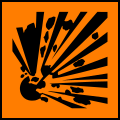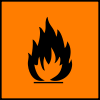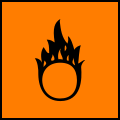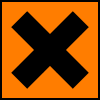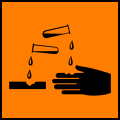This article needs additional citations for verification .(July 2018) |
European hazard symbols for chemicals are pictograms defined by the European Union for labelling chemical packaging (for storage and workplace) and containers (for transportation). They are standardised currently by the CLP/GHS classification. [1]







